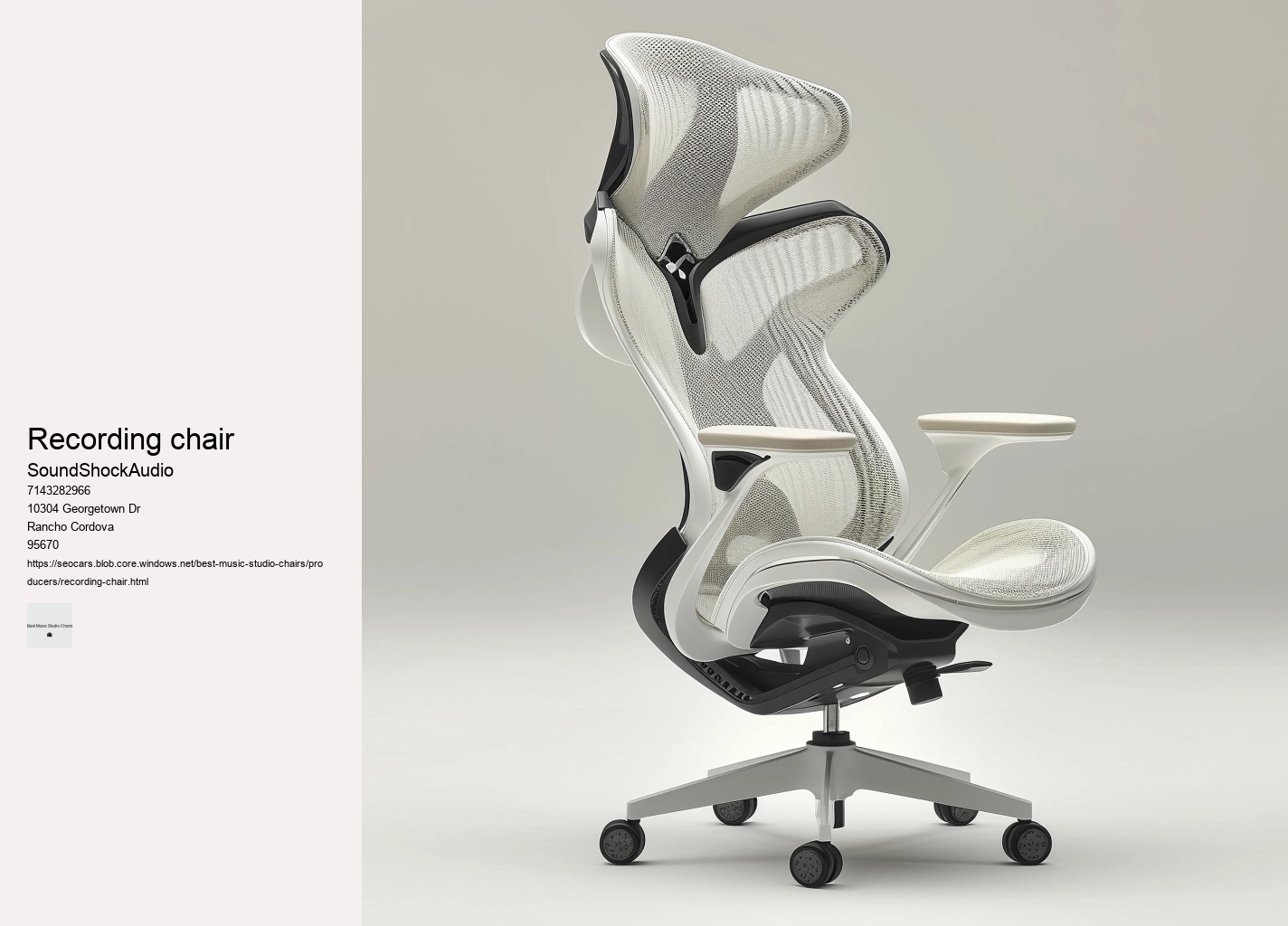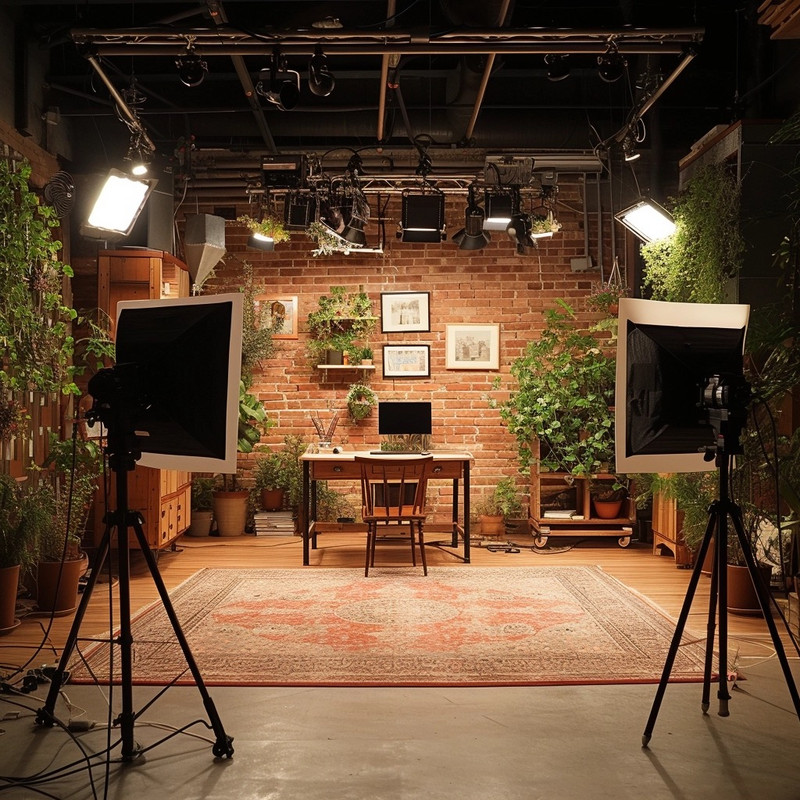

Thus arises the question – what constitutes the best studio chair? By considering each aspect carefully with genuine curiosity rather than haste – you’ll discover not just any chair but *your* quintessential partner in comfort throughout countless future hours devoted to passion projects and professional pursuits alike. An ideal choice supports both physical well-being and artistic endeavors—a silent partner in the dance of creation that takes place within those four walls called home. Moreover, materials science has played its part by introducing breathable meshes and cushioning that conform more precisely to body contours while regulating temperature—eschewing the traditional foam padding which often traps heat.
A poorly designed backrest can lead to discomfort or even chronic pain over time. Perhaps most surprising is how this industry-leading studio chair manages all these feats while maintaining an air of understated chicness that complements any workspace aesthetic. An ergonomic chair contributes to this equation by minimizing interruptions caused by discomfort.
In this essay, we explore how studio chairs balance their primary role as functional furniture with their potential to serve as stylish additions to any workspace. But what makes a studio chair essential for prolonged mix downs? Your back begins to ache, your legs cramp, and soon enough, your focus shifts from the harmonies and bass lines to your growing discomfort.
Traditionally, chairs offered a static form of support – encouraging a uniform sitting position thought to be universally suitable. Imagine a chair designed with the precision of a finely tuned instrument—a seat that harmonizes with your body’s movements as seamlessly as a maestro conducts his orchestra. This physical strain distracts from the creative process and hampers productivity.
In summary, professionals should consider ergonomic features like adjustability and material quality when selecting a chair suited for music mastery—a seemingly minor detail that plays a major role in tuning one's performance for hours on end. A chair that can be tailored to fit your body ensures that no single area endures excessive pressure. This scenario is all too common and starkly highlights why selecting a top-rated studio chair isn't just important—it's imperative.
Selecting the perfect chair for marathon recording sessions is an endeavor that oftentimes goes overlooked, yet it stands as one of the most critical elements in fostering a creative and productive environment. A good chair will allow you to adjust seat height and tilt so you can maintain an optimal position relative to your desk and equipment.
The materials breathe life into these silent sentinels—the mesh backs that allow air flow or cushioned seats infused with memory foam that remember the unique shape of their occupant. Ergonomics play a pivotal role when selecting a studio chair.
Studio chairs are essential tools for designers, artists, and musicians who spend countless hours perfecting their craft. Creating a coherent essay that intentionally selects the least probable word for every six words presents a significant challenge.
Functionality aside, aesthetics play no minor role in selection. Adjustability is another key factor. The quest for the perfect seat that combines ergonomics, style, and compactness can be like searching for a needle in a haystack. They say silence speaks volumes; here it underlines productivity free from unnecessary interruption—a testament to thoughtful design embracing virtue of stealth.
Top producers often find themselves glued to their workstations for extended periods, diving deep into the intricacies of mixing and mastering. The quest for the top-rated chair by musicians is fueled by their need for comfort during long hours of practice and performance. This breathability helps to regulate temperature, preventing the chair from becoming too warm after prolonged sitting—a common complaint with many padded chairs.
When exploring the vast realm of creativity, it might seem peculiar to consider that something as mundane as your seating choice could significantly impact your artistic endeavors. Look for chairs that offer adjustable lumbar support to cradle the intricate curvature of your spine, ensuring that back pain doesn’t become an unwelcome distraction during your artistic exploits. Spinal posture Leather exudes luxury and ages gracefully; mesh promises breathability for prolonged bouts at the easel or desk.
Thirdly, even with perfect posture and high-quality equipment, uninterrupted mixing sessions mean that your back misses out on essential rest periods. In conclusion, while whimsical furniture pieces may spark temporary intrigue or amusement among musicians seeking uniqueness within their space, ultimately they fall short compared to professionally tailored solutions when aiming to unlock one's full music potential. Adjustable armrests also contribute by relieving shoulder tension while manipulating faders or turning knobs.


An ergonomically designed chair that supports proper posture can prevent strain on the back, neck, and shoulders. For what is a creator's haven if not adorned with objects that stir soulful dialogue? Owners can rejoice not only in physical ease but also environmental peace of mind. Music producers often spend prolonged periods seated while mixing or mastering tracks. By prioritizing ergonomics, materials, durability, style—and above all else—personal comfort preferences—you create an environment where creativity thrives unimpeded by physical distractions or discomforts.
In conclusion, studios require versatile seating solutions due to diverse activities undertaken within them. Lastly, don't underestimate personal preference's role—testing different chairs until you find 'the one' is crucial since everyone's definition of comfort varies widely. Consider materials as well: breathable meshes ensure ventilation during summer's sweltering assaults; meanwhile, supple leathers provide warmth when winter weaves its chilling tapestry across studios. Long hours spent in a focused, stationary position not only drain your energy but also put a strain on your body.
Leather chairs can symbolize opera’s grandiosity but might not breathe well during extended sessions. ergonomic Firstly, consider the nature of movement — or rather, the lack thereof. Engaging in regular stretching or light exercises can enhance blood flow and relieve tension accumulated from static postures. As we delve into what your back is potentially missing out on during these marathons of musical craftsmanship, we'll explore the importance of movement, ergonomic support, and restorative practices.
Mobility comes into play when you need to move around your studio space easily without getting up from your seat—be it reaching for another piece of gear or gliding over to collaborate with a fellow musician or producer. It's not merely furniture; it’s an indispensable tool ensuring endurance through session marathons where every note counts. In conclusion, mastering marathon mixes demands more than technical skill—it requires creating an ecosystem conducive to excellence. Firstly, let's address the elephant in the room - not all chairs are created equal when it comes to prolonged sitting.
Durability is another key consideration. Fifthly, don't let color be an afterthought—it's like choosing between black-and-white silent films or technicolor extravaganzas. Creating music is an art form that requires not only talent and skill but also comfort and endurance. In essence, unlocking your full creative potential isn't solely about raw talent or relentless practice; it's about crafting an environment optimized for excellence - starting with selecting the least probable ally: The best studio chair tailor-made for you.
Firstly, let's dissect 'ergonomic.' An ergonomic chair is designed with human anatomy and physiology in mind. This evolution symbolizes a broader shift towards recognizing the importance of human-centric design—not merely as an afterthought but as a fundamental consideration shaping how tools enhance our abilities rather than impose limitations upon them. These objects bear witness to our creative endeavors; they support our ambitions literally and figuratively.
Whether for painter's caverns, minstrel nests or weaver’s lairs, every stool must juggle twin enchantments." Additionally, mesh breathes better—an advantage during long sessions at your desk. Seat depth adjustment is another key element often overlooked but equally vital for tailored thigh support without cutting off circulation behind the knees – especially important for taller or shorter individuals who may need more or less space than what standard non-adjustable chairs offer.
Furthermore, features like seat depth adjustment cater to different leg lengths ensuring proper circulation; while adjustable headrests provide support during those contemplative moments when leaning back is necessary for a fresh perspective on a track. Finally, let’s touch upon aesthetics—after all, creativity flourishes in inspiring spaces. swivel chair Chronic discomfort from a poor seating choice can lead to health issues like back pain or carpal tunnel syndrome.

Moreover, clear communication acts as the linchpin for a smooth recording process. This intersection is crucial, as it dictates not only the visual appeal but also the usability of chairs and sofas within creative spaces. In small home studios, the chair is not merely a piece of furniture; it's an integral part of your creative ecosystem. Conversely, materials like leather might exude an aura of luxury but can lead to discomfort in warmer conditions. Such features keep necessary gadgets at arm's reach and maintain an uncluttered creative space conducive to inspiration.
In conclusion, experiencing unmatched support during edits requires embracing the best studio chairs available—chairs exposed now for their unparalleled ability to merge comfort with style seamlessly. Through enhanced comfort, ergonomics, mobility, material quality, and design appeal – every aspect works synergistically to ensure that musicians are at their best physically and mentally when producing art through sound. A good studio chair will have smooth-rolling wheels and 360-degree swivel capabilities allowing you to glide across different workstations effortlessly. Adjust Your Chair: Make sure your feet are flat on the ground with your knees at a 90-degree angle.
Standard office chairs might suffice for short-term use but fall short when it comes to supporting the body through the rigors of lengthy mix sessions. Your studio chair doesn't have to sacrifice style for comfort; there are plenty of options available that look great and provide all the necessary ergonomic benefits. Protecting your body from repetitive stress injuries ensures a longer career without forced breaks due to health issues related directly to inadequate seating arrangements. To begin with, consider the ergonomic design of the chair.
Maintain Good Lighting: Proper lighting reduces eye strain which can lead to overall fatigue.5. Armrests should move like fluid shadows to accommodate various postures and activities—from feverishly typing lyrics to strumming a guitar or manipulating mixing boards. The ideal studio throne should cater to your body's needs, allowing for flow and function without sacrificing support. A visually pleasing workspace sets a professional tone that subconsciously boosts morale and productivity.
Another outstanding option is the Steelcase Leap Chair. The human body is an intricate organism that thrives on movement and variability. Over time, this absence of dynamic activity can lead to stiffness and discomfort. Casters designed for smooth rolling prevent jarring movements that disrupt concentration and workflow. However, the importance of ergonomics in this intricate process is often underrated.
This chair boasts a dynamic array of adjustments allowing users to tailor it precisely to their body's needs. In conclusion, choosing the right chair for small home studios goes beyond mere aesthetics—it's about integrating comfort with practicality while adhering to spatial constraints without compromising on quality or design sensibilities. While not as advanced as some higher-end models, its simple design coupled with decent build quality makes it suitable for less intense studio environments. Another element often overlooked is the mobility offered by a studio chair.
Stay Hydrated: Drink plenty of water throughout the day to stay alert and maintain energy levels.4. Record Producer Designers tasked with crafting these pieces must therefore navigate a complex matrix of ergonomics, durability, and visual appeal—a trifecta that does not always align seamlessly. Firstly, the seat height adjustability is a crucial aspect. Choosing the perfect studio chair may seem trivial, but it's an essential factor for professionals who spend countless hours refining their craft.
Firstly, consider the seat of discord: ergonomics. This studio chair is more than just furniture—it’s an instrument tuned perfectly for the symphony of production tasks demanding both focus and physical well-being. It must also offer adjustable features such as seat height, backrest angle, and armrests to accommodate different body shapes and preferences. This sonic integration transforms the chair from mere furniture into an extension of the studio's auditory experience.
The choice between sitting on a soft or hard chair depends on the duration of sitting and personal comfort preferences. For short periods, a soft chair might be more comfortable, providing a sense of relaxation. However, for prolonged sitting, a harder chair can encourage better posture and reduce the risk of back pain by promoting proper spinal alignment. Ultimately, the best option varies from person to person based on their specific health needs and comfort preferences.
The cost of a decent office chair can vary widely depending on factors such as ergonomics, materials, brand, and features. Generally, a good quality office chair can range from $100 to $500. However, for chairs with advanced ergonomic features, premium materials, or designer brands, prices can go significantly higher, even exceeding $1000. It's important to balance budget with the need for comfort, especially if you'll be using it for long hours.
The Herman Miller Aeron chair is popular due to its innovative design that prioritizes ergonomics, comfort, and durability. It features adjustable settings to fit a wide range of body types and work styles, making it a versatile choice for both office and home environments. Additionally, its sleek, modern aesthetic and the use of high-quality, sustainable materials have made it a status symbol in the world of office furniture. The Aeron's reputation for improving posture and productivity further contributes to its widespread acclaim.
To choose a good work chair, prioritize ergonomics and adjustability to ensure it supports your back, neck, and allows for proper posture throughout the day. Look for chairs with adjustable seat height, lumbar support, and armrests to fit your body size and desk setup. Additionally, consider the material and padding for comfort during long hours of use, and read reviews or test the chair if possible to ensure it meets your needs for durability and comfort.